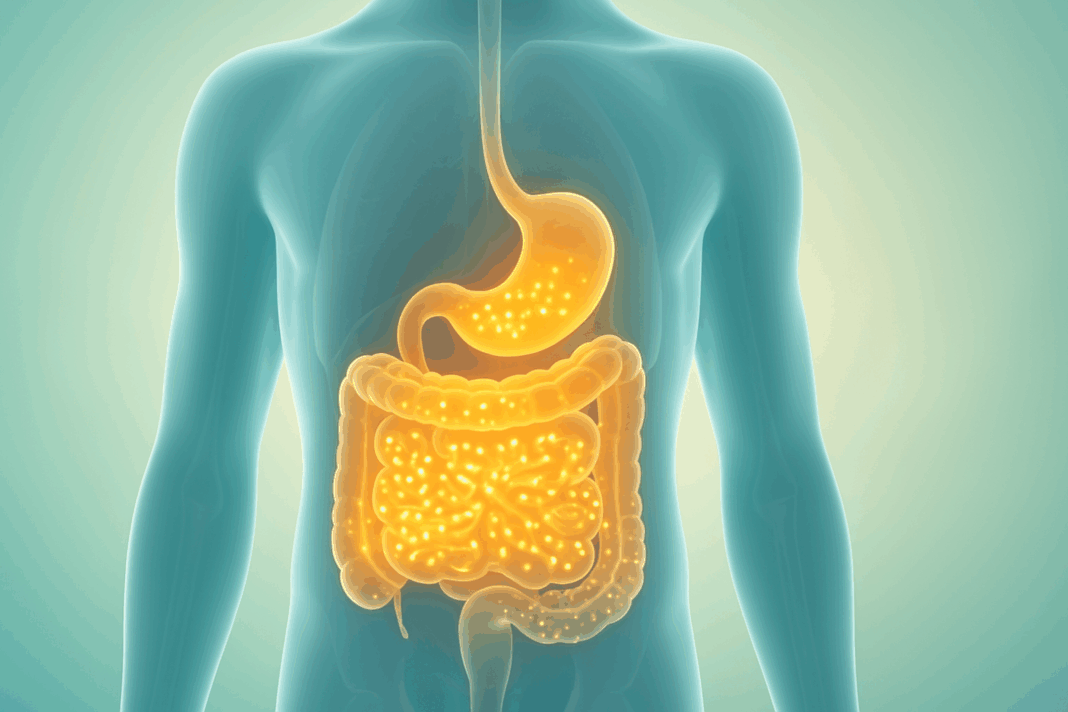Understanding the Basics of Probiotics and Their Role in Gut Health
Probiotics are live microorganisms that confer health benefits when consumed in adequate amounts. These beneficial bacteria and yeasts primarily support digestive and immune health, helping to maintain a balanced gut microbiota. While fermented foods like yogurt, kefir, sauerkraut, and miso naturally contain probiotics, many people opt for probiotic supplements to target specific health concerns or boost overall gut resilience. To make informed decisions about probiotic use, it’s essential to understand not only the potential benefits but also how long a probiotic stays in your system and what factors influence its duration.
When asking how long does a probiotic stay in your system, it’s important to consider that the answer varies depending on multiple factors, including the specific strain used, dosage, formulation, and individual differences in gut microbiome composition. Probiotics do not permanently colonize the gut; rather, they pass through the digestive tract and may linger temporarily, exerting their effects before being excreted. This transient nature means regular intake is typically necessary to sustain any benefits. Nevertheless, even short-term exposure to probiotics can modulate immune response, suppress harmful bacteria, and promote the growth of beneficial microbes.
You may also like: The Ultimate Guide to Choosing an Effective Immune Support Supplement for Daily Wellness
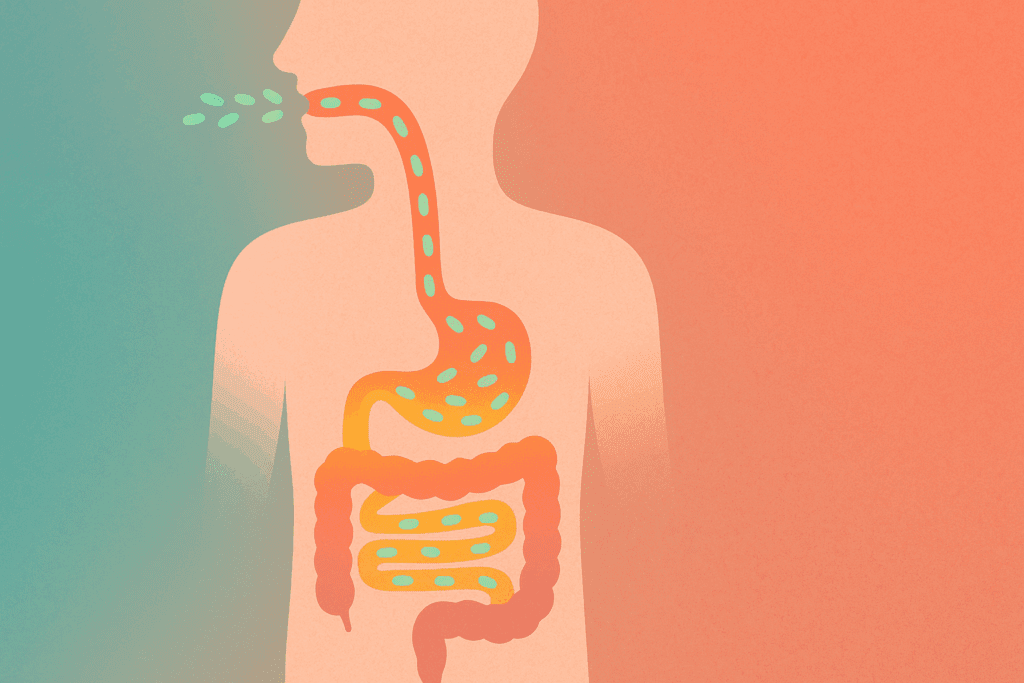
The Journey of a Probiotic Through Your Digestive System
To understand the time frame during which probiotics remain in your body, it’s helpful to track their path from ingestion to excretion. Once consumed, probiotics must survive the acidic environment of the stomach, navigate the enzymatic breakdown in the small intestine, and finally reach the large intestine, where they perform most of their beneficial work. The journey can be harsh and survival is not guaranteed, which is why certain strains and formulations are more effective than others.
Some supplements use enteric-coated capsules or time-release mechanisms to improve survival rates through the upper digestive tract. When a probiotic reaches the colon intact, it can adhere to the intestinal wall, interact with existing microbiota, and participate in metabolic functions. However, this residence is temporary. In general, probiotics remain in the system for one to three weeks after ingestion stops, although trace effects may persist longer depending on the individual and the specific strain.
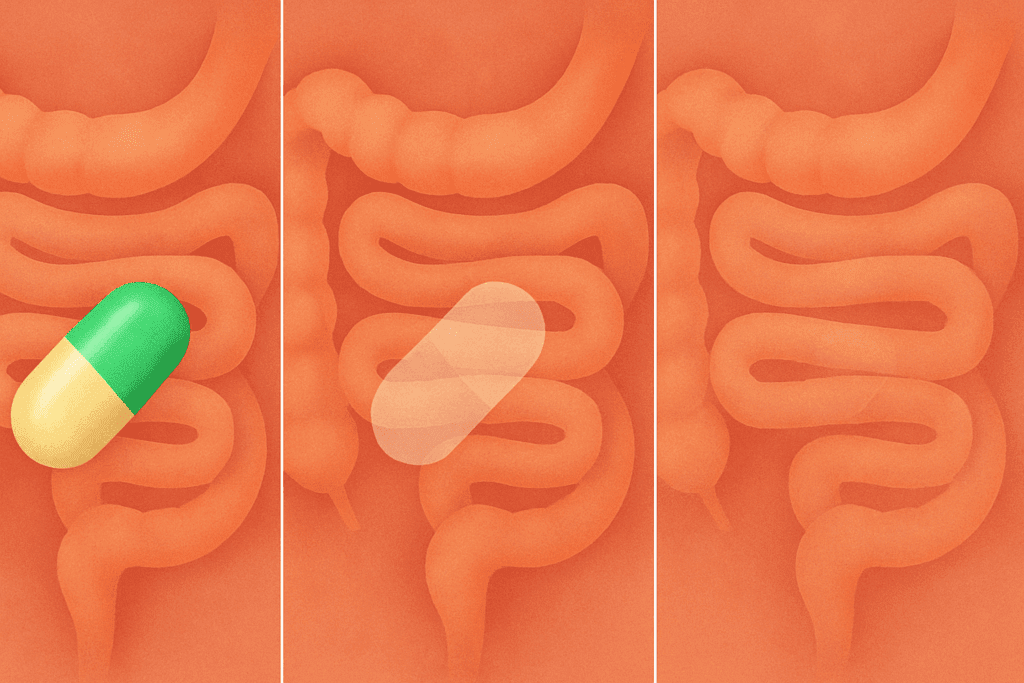
How Long Does a Probiotic Stay in Your System After Discontinuation?
A common question from individuals taking supplements is how long does a probiotic stay in your system once you stop taking it. Clinical studies indicate that most probiotics are detectable in feces for up to two weeks post-supplementation. Some strains, particularly those in the Lactobacillus and Bifidobacterium genera, may remain detectable for up to three weeks. However, this does not mean they are functionally active throughout this period. Their activity often diminishes once supplementation ends and competing native microbes begin to reclaim ecological niches.
The duration also depends on whether you’re supplementing with single-strain or multi-strain products. Multi-strain probiotics may have synergistic effects, enhancing overall survival and function, but even these typically clear the system within a month. Persistent colonization is rare and often strain-specific, involving particular environmental and host factors. In most healthy adults, a consistent intake is required to maintain benefits, especially in the face of lifestyle factors that disrupt microbial balance, such as antibiotics, stress, or poor diet.
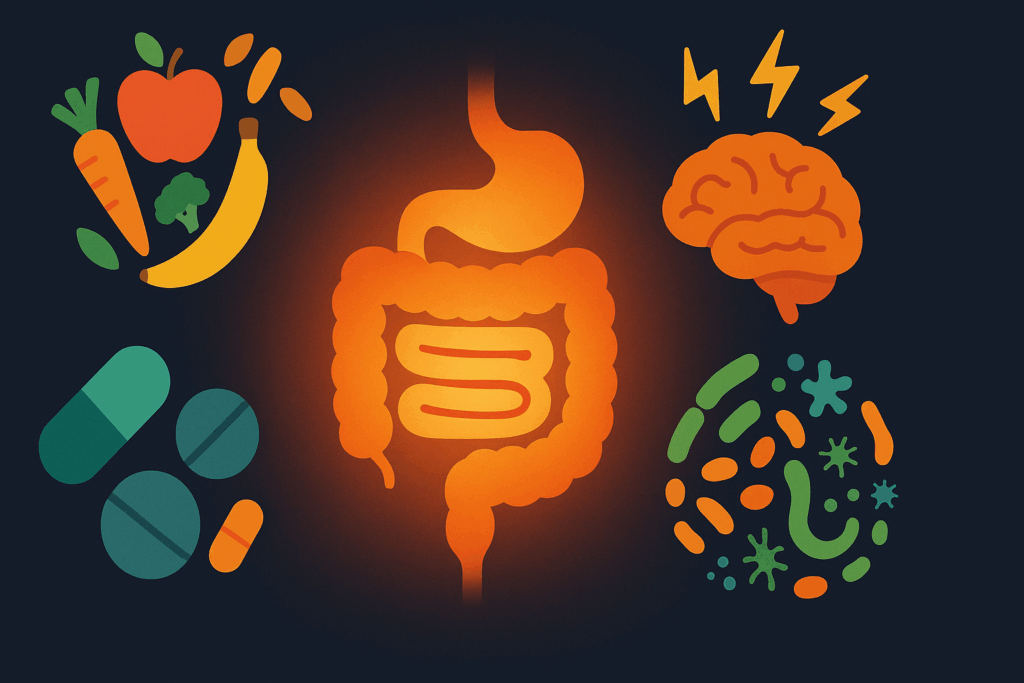
What Influences How Long Probiotics Stay in the System?
Several key variables affect how long a probiotic remains in your body. One major factor is the strain specificity. Not all probiotics behave the same way; for example, Lactobacillus acidophilus, a commonly studied and widely used strain, has a relatively short duration of activity unless taken continuously. Still, the lactobacillus acidophilus benefits are substantial, making it worth regular supplementation for many people.
Individual health status and microbiome diversity also play critical roles. People with disrupted or depleted microbiomes, such as those recovering from antibiotic use or chronic illness, may retain supplemented probiotics longer due to reduced microbial competition. Conversely, individuals with robust, diverse microbiomes may clear supplemented strains more quickly. Digestive transit time, gastric acidity, and bile concentration can also impact the survival and retention of probiotic organisms.
Diet is another modifiable factor. Prebiotic-rich foods like garlic, onions, bananas, and whole grains provide fermentable fibers that nourish probiotics and enhance their survivability. This symbiotic relationship can extend the functional activity of probiotics in the gut even if their physical presence declines. Additionally, the timing and method of supplementation—whether with meals or on an empty stomach—may influence outcomes, although research remains inconclusive on the optimal protocol.
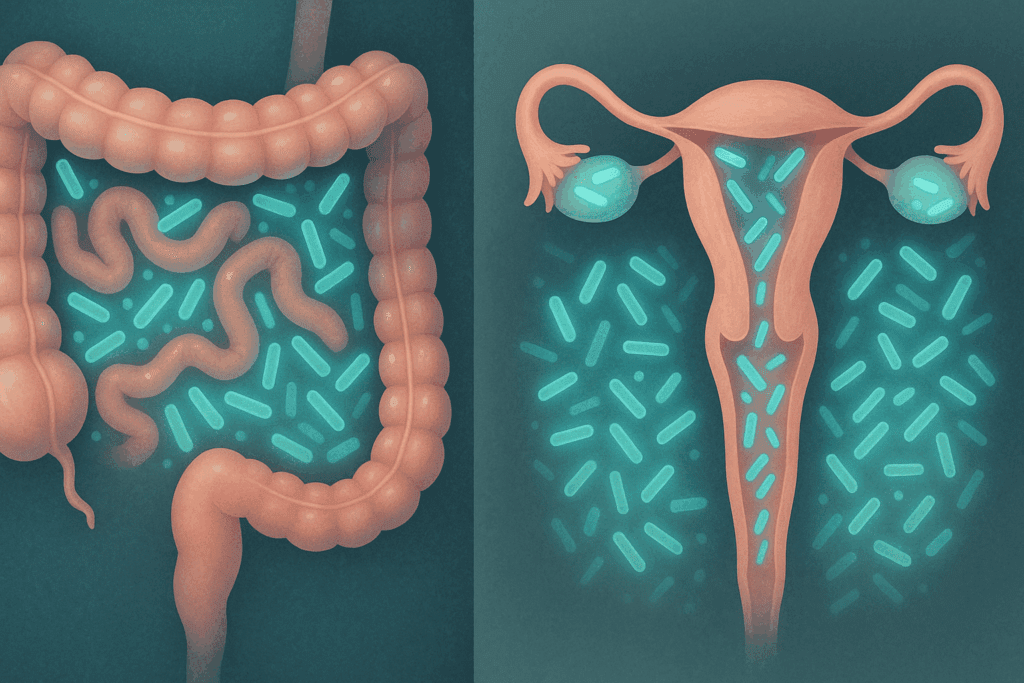
How Long Does a Probiotic Stay in Your System When Using Acidophilus?
A particularly well-known strain, Lactobacillus acidophilus, has garnered attention for its resilience and range of health effects. The question of how long does acidophilus stay in your system depends on many of the same variables mentioned earlier, but its specific properties provide a clearer picture. L. acidophilus is often found in the small intestine and vagina, where it helps maintain pH balance, outcompete pathogens, and support immune function. The l acidophilus benefits make it a staple in women’s health products, including those addressing vaginal infections, urinary tract health, and general digestive support.
Typically, L. acidophilus can survive in the gut for about one to two weeks following the cessation of supplementation. While not a permanent resident, its short-term activity can significantly influence gut microbiota dynamics. Studies suggest that the benefits of acidophilus may include modulation of inflammation, improvement in lactose digestion, and enhancement of epithelial barrier integrity. Therefore, even a temporary colonization period may yield measurable improvements in well-being.
It is important to note that while the presence of L. acidophilus may decline after supplementation ends, some of its downstream effects—such as competitive inhibition of harmful bacteria or stimulation of mucosal immunity—can persist beyond its detectable presence. Thus, the functional footprint of a probiotic may outlast its physical residence, especially in individuals consuming supportive diets rich in fiber and plant-based foods.
Maximizing the Benefits of Acidophilus Probiotics for Women
Among the most compelling reasons to supplement with L. acidophilus are the acidophilus probiotic benefits for women. These include vaginal microbiome support, reduction of yeast overgrowth, and improved urinary tract resilience. Hormonal changes, contraceptive use, and antibiotic treatments often disrupt the vaginal microbiota, increasing susceptibility to infections. Regular supplementation with L. acidophilus can help reestablish equilibrium, reduce recurrence rates of bacterial vaginosis and candidiasis, and bolster mucosal defenses.
Women may particularly benefit from targeted probiotic blends that include not just L. acidophilus, but also Lactobacillus rhamnosus and Lactobacillus reuteri, which have complementary functions. These strains can adhere to vaginal epithelial cells and produce lactic acid, lowering pH and creating a hostile environment for opportunistic pathogens. While these benefits are most pronounced during active supplementation, some degree of protection may persist temporarily after discontinuation, especially if dietary and lifestyle factors are supportive.
For maximum efficacy, women should consider taking acidophilus probiotics during and after antibiotic therapy, during hormonal transitions like menopause, or when experiencing chronic genitourinary symptoms. Additionally, consuming prebiotic fibers and minimizing sugar intake can help sustain the benefits longer, even if the probiotic organisms are no longer present in significant numbers.

Clinical Studies on Probiotic Persistence and Clearance
Scientific research provides essential insights into the persistence and clearance of probiotics in the human system. Multiple randomized controlled trials and observational studies have evaluated how long different strains remain viable in the gut and how their presence correlates with health outcomes. For instance, a study published in the journal Gut Microbes found that most commercial probiotic strains, including L. acidophilus, are not permanent residents and typically clear from the system within 7 to 21 days after the last dose.
In another study involving healthy adults, fecal samples were analyzed before, during, and after probiotic supplementation. Results showed detectable levels of Lactobacillus and Bifidobacterium strains during the supplementation phase, which declined rapidly within two weeks post-supplementation. Interestingly, individuals with lower microbial diversity retained probiotic strains longer, indicating that host microbiome characteristics significantly influence probiotic kinetics.
Advanced genomic sequencing has also enabled researchers to trace the metabolic impact of probiotics beyond their physical presence. These findings support the idea that even transient colonizers can leave a lasting imprint on the microbiome by modulating gene expression, promoting anti-inflammatory pathways, and enhancing barrier functions. Therefore, the question of how long a probiotic stays in your system may require broader interpretation, considering both microbial presence and functional influence.
How Long Does a Probiotic Stay in Your System Based on Supplement Formulation?
The delivery system of a probiotic supplement plays a critical role in determining how long it stays active within the gastrointestinal tract. Some formulations, such as enteric-coated capsules, delay dissolution until reaching the intestines, thus improving strain viability. Time-release tablets and spore-based probiotics are designed to extend microbial activity and enhance survival through harsh digestive conditions.
Fermented foods also act as natural delivery systems, though their probiotic content can vary significantly depending on preparation methods and storage conditions. Yogurt with live active cultures, for example, may contain effective doses of L. acidophilus, but not all commercial yogurts meet this standard. Similarly, kombucha and kefir may offer a wide array of strains, though their diversity and viability are less consistent compared to pharmaceutical-grade supplements.
Multi-strain formulations may offer a broader spectrum of benefits, including increased resistance to gastric acid and improved colonization efficiency. However, these advantages do not necessarily equate to longer retention in the body. Instead, they enhance the probability that at least some organisms survive and exert effects during their temporary stay. Thus, formulation is a key determinant of functional duration, if not physical persistence.
The Role of Diet, Lifestyle, and Health Status in Probiotic Retention
In addition to supplement-specific factors, personal health and lifestyle profoundly impact how long a probiotic stays in your system. A nutrient-rich diet abundant in prebiotic fibers fosters a hospitable environment for probiotic organisms, enhancing their adhesion and activity. Conversely, high-fat, high-sugar diets can disrupt microbial balance, undermining the effectiveness and longevity of supplemented strains.
Hydration, physical activity, and stress levels also modulate gut health and, by extension, probiotic persistence. Chronic stress alters gut permeability and immune responses, potentially accelerating probiotic clearance. Similarly, sedentary lifestyles are linked to reduced microbial diversity and resilience. Adopting holistic health practices can thus extend the influence of probiotics, even if their detectable presence fades over time.
Medical conditions such as irritable bowel syndrome (IBS), inflammatory bowel disease (IBD), and recurrent infections can either hinder or promote probiotic retention, depending on disease severity and treatment regimens. In such cases, personalized probiotic protocols may be necessary, guided by a healthcare provider with expertise in microbiome science.
Frequently Asked Questions: How Long Does a Probiotic Stay in Your System?
How long does a probiotic stay in your system after stopping use?
While most probiotics are detectable in the digestive system for about one to three weeks after cessation, the exact duration varies depending on factors such as the specific strain, dosage, and host microbiome. Emerging studies show that some individuals may retain probiotic DNA in their feces longer than others, even after the organisms themselves are no longer viable. It’s also worth noting that the environment within your colon—such as pH level, nutrient availability, and microbial competition—can accelerate or slow down probiotic clearance. Researchers now emphasize that “residence time” doesn’t always equate to active benefits. Even after a probiotic is no longer detectable, its metabolic byproducts can continue influencing your gut environment and immune response.
Can taking prebiotics help extend how long a probiotic stays in your system?
Yes, prebiotics may significantly influence how long a probiotic stays in your system by serving as nourishment for the beneficial microbes. These non-digestible fibers help create a favorable environment in which probiotics can flourish temporarily. The synergy between prebiotics and probiotics—commonly referred to as synbiotics—can enhance microbial adhesion, improve colonization rates, and prolong functional activity even after detectable levels decrease. Incorporating foods like asparagus, garlic, onions, and chicory root into your diet can enhance this effect. Beyond extending probiotic retention, prebiotics can also help stabilize gut microbiota, thus reinforcing long-term digestive health.
How long does acidophilus stay in your system compared to other strains?
When considering how long acidophilus stays in your system, it’s important to understand that it is a relatively transient resident, like most probiotics. However, Lactobacillus acidophilus may have slightly enhanced adhesion properties in the small intestine compared to other strains like Bifidobacterium breve or Lactobacillus casei. This makes it more likely to persist for up to two weeks after supplementation ceases, particularly in individuals with low microbial diversity. Additionally, emerging encapsulation technologies are improving the delivery and longevity of L. acidophilus in the gut. These innovations may extend both its detectability and physiological impact, making it a strong candidate for sustained supplementation routines.
What are the lesser-known benefits of acidophilus supplementation?
Beyond digestive support, the benefits of acidophilus extend into areas like skin health, cholesterol metabolism, and even mental well-being. Some preliminary research suggests that L. acidophilus can lower LDL cholesterol levels by interfering with bile salt reabsorption in the gut. In dermatology, topical and oral forms have been explored for managing conditions such as eczema and acne due to their anti-inflammatory and antimicrobial properties. Moreover, some studies point to a gut-brain connection, where lactobacillus acidophilus benefits include potential modulation of mood and cognitive function. While these findings require more rigorous validation, they expand the scope of how acidophilus probiotic benefits for women and men are understood.
How long does a probiotic stay in your system if taken during antibiotic therapy?
Taking probiotics concurrently with antibiotics introduces unique variables into the equation of how long does a probiotic stay in your system. Antibiotics can drastically reduce both pathogenic and beneficial bacteria, creating ecological niches that may temporarily allow probiotics to persist longer. However, timing is critical. Probiotics should ideally be taken at least two hours apart from antibiotics to reduce the risk of inactivation. Interestingly, certain strains like Saccharomyces boulardii are more resistant to antibiotics and may remain active longer. Post-antibiotic, introducing probiotics promptly can help reestablish a balanced microbiome and potentially speed up gut recovery.
Are there behavioral or psychological effects associated with lactobacillus acidophilus benefits?
Yes, although it’s a relatively new area of research, several clinical studies have explored how lactobacillus acidophilus benefits might extend into behavioral and mental health domains. This strain is thought to influence the gut-brain axis through mechanisms like neurotransmitter regulation, immune modulation, and barrier protection. Animal studies have shown improved serotonin levels and reduced anxiety-like behaviors following L. acidophilus supplementation. While human trials are still developing, the early evidence points to the strain’s role in managing stress, sleep quality, and even mild depressive symptoms. This adds another layer to the acidophilus probiotic benefits for women, especially during hormonal shifts or stressful life phases.
How can lifestyle influence how long a probiotic stays in your system?
Lifestyle plays a pivotal role in determining how long a probiotic stays in your system. Diets high in processed foods, sugar, and alcohol can create an inhospitable environment for beneficial microbes, reducing their longevity. Conversely, plant-based diets rich in polyphenols, fiber, and fermented foods can significantly enhance probiotic survival and integration. Physical activity and stress management are also important. Regular exercise increases gut transit time and microbial diversity, while chronic stress may impair gut barrier integrity, facilitating faster probiotic clearance. Thus, a holistic approach to health can reinforce the l acidophilus benefits and ensure that supplemented strains have a greater chance to thrive, even temporarily.
How long does a probiotic stay in your system when taken with fermented foods?
Combining probiotics with fermented foods may slightly extend how long a probiotic stays in your system by introducing complementary microbial strains and enhancing gut biodiversity. Fermented foods like kimchi, kefir, and sauerkraut contain naturally occurring probiotics that can reinforce those delivered through supplements. This dual-source strategy not only increases microbial load but may also create synergistic interactions that support colonization and function. Furthermore, fermented foods often provide a natural matrix—such as dairy or fiber—that can shield probiotics from gastric acid. This protection can improve the likelihood of reaching the colon intact, where they can interact with resident bacteria and perform their roles.
What are the best practices for maintaining acidophilus probiotic benefits for women?
To sustain acidophilus probiotic benefits for women, consistency is key. Rather than sporadic use, daily supplementation is recommended during vulnerable periods such as menstruation, pregnancy, or antibiotic treatment. Additionally, pairing L. acidophilus with other strains like L. rhamnosus or L. reuteri can improve outcomes by targeting different parts of the reproductive and urinary tract. Staying hydrated, reducing sugar intake, and wearing breathable clothing also help create a physical environment that supports microbial balance. Finally, gynecological health routines should be aligned with probiotic use—for example, avoiding douches or harsh cleansers that can disrupt the vaginal microbiome and offset lactobacillus acidophilus benefits.
Are there long-term risks or downsides to using acidophilus daily?
Generally, acidophilus is considered safe for long-term use in healthy individuals, but there are nuances worth exploring. Over-reliance on a single strain could potentially reduce microbial diversity, particularly if dietary variety is lacking. Rare cases of probiotic-induced infections have been reported in immunocompromised individuals, emphasizing the need for medical supervision when necessary. Some people may experience mild side effects like bloating or gas, especially during the initial phase of use. Therefore, it’s advisable to periodically reassess your supplementation strategy and consider rotating strains or taking breaks to prevent dependency. When used mindfully, l acidophilus benefits can be part of a broader, sustainable wellness plan.
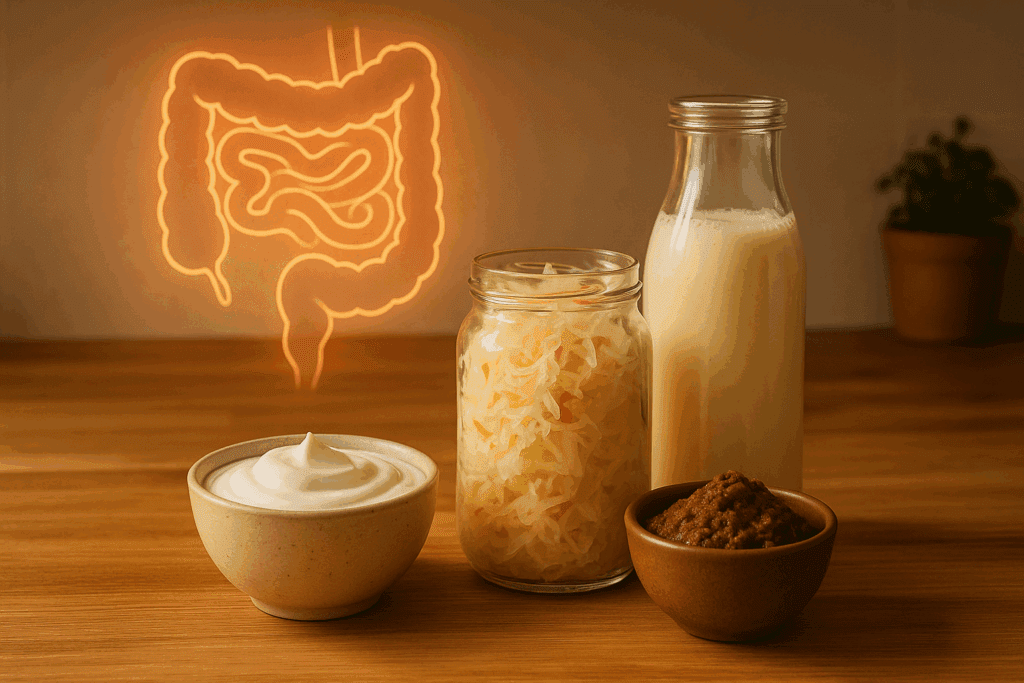
Conclusion: Making Informed Choices About Probiotic Use and Duration
Understanding how long does a probiotic stay in your system equips you to make more informed decisions about your supplementation strategy. While most probiotics do not become permanent fixtures in your microbiome, their transient activity can produce meaningful health benefits—especially when integrated into a lifestyle that supports gut health. Strain specificity, supplement formulation, host health, and dietary patterns all play pivotal roles in determining how long probiotics linger and how effectively they function.
For individuals seeking targeted results, such as the acidophilus probiotic benefits for women or broader lactobacillus acidophilus benefits, regular supplementation may be necessary. However, even short-term use can provide value when coupled with supportive practices like eating fiber-rich foods, managing stress, and maintaining hydration. Ultimately, the key lies in consistency, education, and personalization. By understanding not just the benefits of acidophilus or how long does acidophilus stay in your system, but also the broader implications of probiotic kinetics, you position yourself for smarter, more effective wellness choices in the realm of supplements and functional foods.
Further Reading:
How Long Do Probiotics Stay In Your System? (new findings)
How Long Do Probiotics Stay in Your System? Understanding Their Impact on Gut Health


